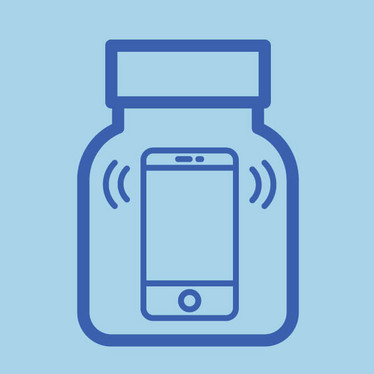The Smart Pill Bottle
Could a text message make all the difference in ensuring the integrity of drug products?

Smarter pharmaceutical packaging is becoming a hot topic because of its potential to support the healthy production and distribution of drugs and biologics. When used correctly, for example, smart packaging options can protect against anticounterfeiting, prolong shelf life and help improve patient compliance. However, the cost associated with the manufacture of smart and digital packaging, particularly sensors, often means that these types of products are not available where they are most needed. With the aim of improving the availability of sensor technologies at lower costs, researchers at the King Abdullah University of Science and Technology, Saudi Arabia (KAUST) have developed a smart pill bottle that sends wireless alerts to patients’ phones when it detects signs of tampering, unsafe storage conditions, or overdose.
“While sensors hold a great deal of potential, currently available options can often be too bulky for real-life applications,” explains Muhammad Mustafa Hussain, Professor of Electrical Engineering at KAUST. “Smart labelling technologies are often limited in their functionality and lack effective communication networks and data integration techniques to help companies adequately support patients.”
Hussain and his team developed a sensor with touch sensitive application. It is unconductive in its normal state but when pressed by a finger, the electrical connections enable signals to be sent to an external reader. Using 3D printing, the KAUST team created a pill bottle lid that relies on light-emitting diodes to count the number of pills dispensed and added temperature and humidity sensors made from paper (with circuits drawn in conductive ink) to the underside of the lid.
“Tamper-proof packaging ensures the integrity of products with sensitive and complex ingredients. It is vital that we are able to ensure the quality of drug products for patients and our technology, when applied to pill bottles, can report signs of tampering and sub-par storage to end-users via mobile alert and support caregivers of patients with the propensity to cause harm to themselves through drug abuse,” Hussain adds.
The research group intends to make their research open source so that others within the scientific community can replicate their design, particularly in deprived areas.
“We want to help empower people. By giving researchers the opportunity to use our technology, we hope that they will open up broader horizons for the use of electronics for pharma.”
- Flexible and Printed Electronics, “Do-It-Yourself integration of a paper sensor in a smart lid for medication adherence” (2019).
After finishing my degree, I envisioned a career in science communications. However, life took an unexpected turn and I ended up teaching abroad. Though the experience was amazing and I learned a great deal from it, I jumped at the opportunity to work for Texere. I'm excited to see where this new journey takes me!



















